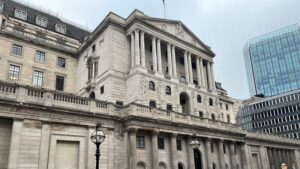Employment increased 222,000 in June according to the latest data published on Friday, smashing earlier predictions that the rise would be closer to around 178,000.
Most of the job gains came from rising numbers of people employed in health care, social assistance, financial activities and mining.
The unemployment rate hardly changed and hovered at 4.4% with the number of unemployed people, seven million, unchanged in June.
Over the past 3 months, job gains have averaged 194,000 per month.
While the headline figures were good news on the surface, AJ Bell’s investment director Russ Mould feared there was “more slack” in the system than headline rates implied.
He said: “A dismal labour participation rate of 62.8% and a still-troublesome 8.6% U6 unemployment rate – which includes discouraged workers and those with part-time jobs through lack of options- suggest there may be more slack in the system.”
Despite this the federal reserve seems fixed on a rate hike, Mould added.
“This suggests the fed is much less ‘data-dependent’ than before and seems keen to tighten policy now, if only so it has some room to loosen it again as and when the next economic downturn develops,” he said.
Wage growth remained “as measly as it’s been for a while” added Aberdeen’s senior investment manager James Athey with average pay rising just 2.5% over the year, failing to meet expectations of a 2.7% rise.
Athey said: “Nothing here is going to dissuade the Fed from its rate hiking cycle though.
“With unemployment below 4.5%, the jobs market is the least of the Fed’s worries. There’s a new hawkish mood that’s rippling through bond markets and causing a sell off and the figures won’t do much to halt that.
“Meanwhile, the Fed is going to have to come to some consensus about whether the Philips curve still works if they don’t want investors to start fretting.”







